A comparison of Prophet Muhammad’s House, the new Istana Negara and Buckingham Palace.
If you go to www.livingislam.org, you will find a description of Prophet Muhammad’s House. It is worthwhile reproducing the relevant passages below:
His house was but a hut with walls of unbaked clay and a thatched roof of palm leaves covered by camel skin. He had separate apartments for his wives, a small room for each made of similar materials. His own apartment contained a rope cot, a pillow stuffed with palm leaves , the skin of some animal spread on the floor and a water-bag of leather and some weapons. These were all his earthly belongings, besides a camel, a horse, and some land which he had aquired in the later part of his life. (Bukhari, Muslim, Abu Dawud).
Once some of his disciples, noticing the imprint of his mattress on his body, wished to give him a softer bed, but he politely declined the offer saying, “What have I to do with worldly things. My connection with the world is like that of a traveler resting for a while underneath the shade of a tree and then moving on.” Amr Ibn Al-Harith, a brother-in-law of the Prophet , says that when the Prophet died, he did not leave a cent, a slave man or woman, or any property except his white mule, his weapons and a piece of land which he had dedicated for the good of the community. (Sahih Bukhari).
He advised the people to live simple lives and himself practised great austerities. Even when he had become the virtual king of Arabia, he lived an austere life bordering on privation. His wife Ayesha (radiyallaahu `anha) says that there was hardly a day in his life when he had two square meals. (Sahih Muslim).
When he died there was nothing in his house except a few seeds of barley left from a mound of the grain obtained from a Jew by pawning his armour. (Bukhari, Sahih Bukhari, Chapter “Aljihad”).
He had declared unlawful for himself and his family anything given by the people by way of zakat or sadaqa (types of charity). He was so particular about this that he would not appoint any member of his family as a zakat collector. (Sahah-Kitab Sadaqat).
The names in the brackets are the sources of information. They are from the Hadith collected by the respective scholars – Muslim, Bukhari, Abu Dawud. A hadith is a reported act, saying or tacit approval of the Prophet Muhammad. Now if you look for Prophet Muhammad’s house on the internet, it is likely that you find the following pictures depicting it:
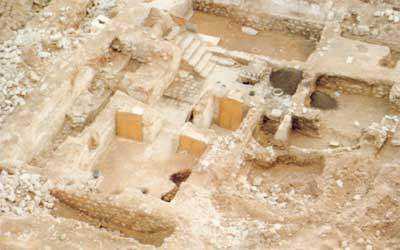
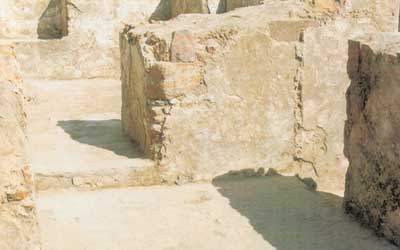
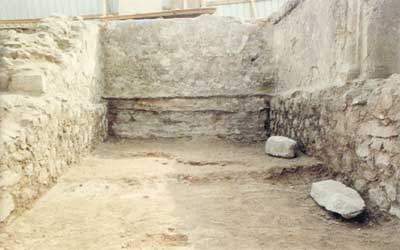
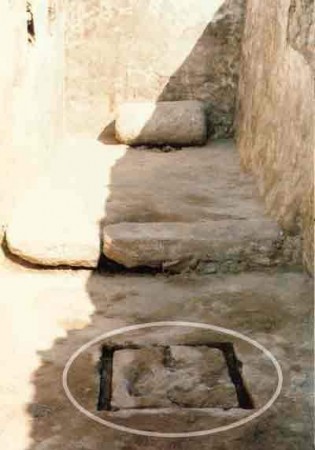
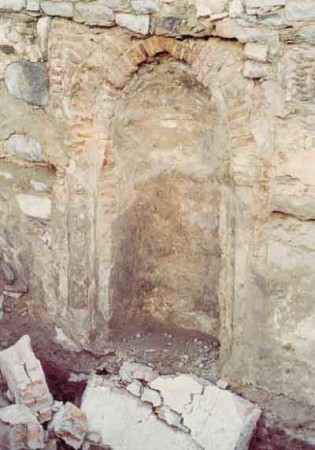
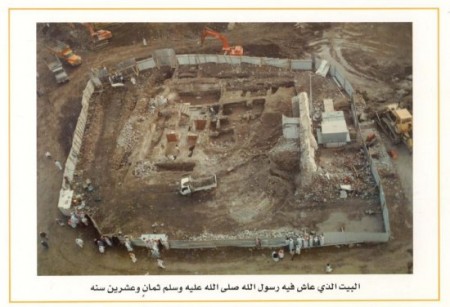
If you search further, you will no doubt find some dispute about whether the pictures above truly shows Prophet Muhammad’s house. But what is inescapable from both the pictures and the hadith descriptions was the humble dwellings the Prophet lived in. That was how the original leader of Islam lived. Muslims are encouraged and taught to follow the ethic of the Prophet from his sayings, doings and approvals. The hadith is a widely accepted as being only second in authority after the Quran, provided they are valid and accepted by the Muslim community as those of Bukhari, Muslim and Abu Dawud are.
In Malaysia, the Yang di-Pertuan Agong is the Head of Islam for the Federation (Article 34(1) of the Federal Constitution). The Sultans are the Head of Islam for their respective States. One would think that as the Head of Islam, their royal Highnesses would scrupulously follow the noble ways of Prophet Muhammad. Their very titles imply that. After all, how can they be the Head of Islam if they turn away from the teachings of Prophet Muhammad? It is this very question that is provoked when one observes and hears about the building of the new Istana Negara in Sri Hartamas, Kuala Lumpur.
First let us start with what we have heard. The Star reports the Istana Negara to cost RM 800 million and cover an area of 100,000 square meters. The space would house the palace building, mini army camp, parking area, security office and housing for the palace staff and police. The elevated access flyover from Jalan Duta cost a princely sum of RM 106 million with another royale RM 32.5 million used to upgrade Jalan Changkat Semantan which would serve as the second access road to the palace.
Sometime in October 2010, TMI reports that the Istana Negara would now cost RM 935 million. The original tender was RM 650 million. Earlier however in 2006, Samy Vellu said it would cost a mere RM 400 million and was supposed to be completed in 2009. So this Istana Negara project is supposed to cost almost RM 1 billion and is 2 years late. There are no reported remarks by the Yang di-Pertuan Agong or any of the Sultans about the scale and cost of the new Istana Negara.
But enough hearing, let’s look at some pictures.
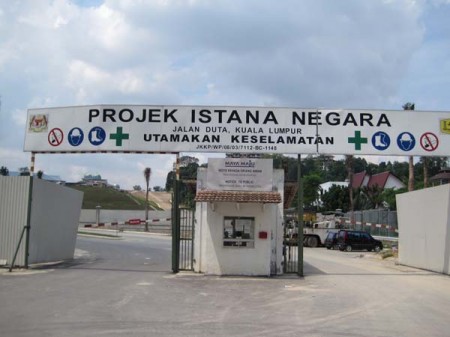
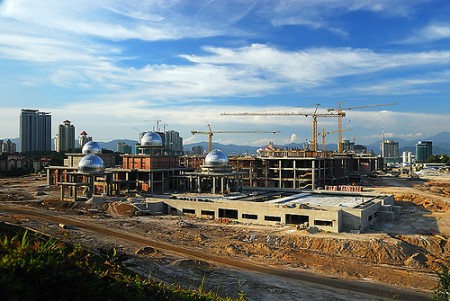
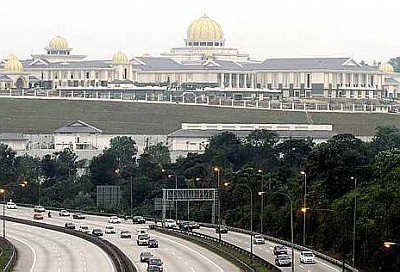

With Malaysian raring to be the global Halal Hub, ensuring that all food and consumer products are halal i.e. in accordance with Islamic injunctions, this should surely extend to the way of life of the Heads of Islam and the buildings they live in i.e. it must be circumspect and necessary only for what they require. If Prophet Muhammad did not require a massive, expensive palace to live in when he united the tribes of Saudi Arabia and became their leader, it is unclear why the Yang di-Pertuan Agong, or any Sultans, for that matter should live in such splendour far removed from the humble hearth of Prophet Muhammad. It is disappointing that the National Fatwa Council has not issued a fatwa (opinion) on the amount of money spent on the Istana Negara and to clarify whether such a building is consistent with the tenets and spirit of Islam.
The sheer size and cost of the Istana Negara suggests that it cannot be a monument of humility. But Surah 25:63 says:
“The (true) servants of (God) the Most Gracious are those who walk on the earth in humility, and when the ignorant address them, reply with (words of) peace.”
In stark contrast, the Buckingham Palace was first the home of the Duke of Buckingham in 1705. It was converted into the official royal palace in 1837 on the accession of Queen Victoria. It went several major changes before settling into its present form. According to reports, in May 2009, the Royal Family were told to open the palace to public for more than 60 days and even when the Royal Family were in residence to increase revenue when they asked for an extra £4 million in annual funds to maintain the palace. The British Government currently provides £15 million yearly for the palace’s upkeep.
Fahri Azzat still cannot find an appropriate reason to build the new Istana Negara and is forced to consider suspicious suppositions for it.
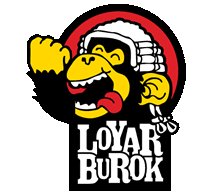
Sadqa is one which is also very useful to increase your meager income, if ye do sadqa from your right hand without knowing to your left hand will surely be a perfect way to get Allah bounty on your income
download quran apps
Salam,
The Istana Negara according to the Quranic definition is the seat of kufur authority :
1. The Agung and the Malay Rulers are Gods worshipped by Muslims and non-Muslims alike;
2. The Istana Negara is the Great Temple where Muslims worship the Agung and the Malay Rulers as Gods;
3. The worshippers and the worshipped in the Istana Negara are perfect kafirs according to the Quran;
4. The Istana Negara has to be of a size and cost comparable to the Buckingham Palace, London, as both are the very symbols of Jewish power in the world;
5. Drug, prostitution and gangsterism in Malaysia are run by Chinese under the Jewish umbrella – these types of very profitable, very multi-racial and harmonious businesses could be operated and directed by the Jews from the Istana Negara;
6. The Istana Negara would possibly function as the Centre of Operation for the activities of the Freemasons and the Illuminati in Malaysia.
7. Nothing is new here – it is an age-old issue!
8. According to our Muftis, the Istana Negara is very Islamic – just ask them!
Salam.
Wan Solehah al-Halbani
Lubuk Terua , Temerloh, PAHANG DM
.
Fahri Azzat is only expressing what most decent and reasonable humans feel about the grotesque institution of monarchy in the 21st century. While it may be true that humans relish deifying a select few to put on a pedestal and worship – as witness how Hollywood stars and pop icons have become the new pantheon of gods – digital technology has accelerated the spread of egalitarian ideals whereby the younger generation is attracted to those with phenomenal beauty or brains or talent or wisdom, not those born in particular families that have wielded power for centuries. In effect, traditional emblems of authority and power are rapidly losing their glitter and their long-entrenched stranglehold on the public imagination. So the idea of pampering and propping up a few overdressed, pompous puppets and building them billion-dollar palaces will strike the majority of thinking folk as obscene, extravagant and utterly unnecessary. Evolution and revolution are powerful forces to contend with. I seriously doubt the parasitic tradition of hereditary royalty will last more than a few more years anywhere on this planet. More and more humans are already reclaiming their individual sovereignty and power and learning to rule over their own domains in a fractal universe.
islam is great but most muslims are not………..
just because they have a great religion they thought they are immediately above others………
generally, muslims are born muslims and we expect them to be kind and good……..are they? fcuk no!!! all the story of rapes, corruptions, treacheries and news of police and others are doing cruel things like farthing on people faces and throwing out bodies out of window etc……..fcuk!!!!
they feel ashamed to acknowledge mistakes committed by fellow muslims but instead, accused others of denigrating islam; even asking some mosque to tune down the speaker deserved isa as if allah had allowed them to do anything they like with impunity.
with slightest provocation they will run amok, threaten to burn and kill……..in malaysia, they don't want to sit down with other religious organisations to smooth out things……….not because they are afraid, it is because they have no answers to what they did.
sometimes i do feel to leave this country and allow all the new muslim immigrants here have fun but then this is my country…….do i and can i have my say?
FCUK!!!!
hey fuck what look at how your mouth opens you think respecting god is by talking nonsense please look at how you talk just back off and respect your god if you dont respect our god its ok we dont force you its your choice and we dont even talk about your gods but only the one who is spoils or do not think. so please watch your language cause god knows what you have just said. if you care so much pray
Loyar buruk is actually a SYIAH follower, thats why he is rubbishing around and comparing the Prophet and the Istana. Spread the words Loyar buruk is a syiah deviationist of ISLAM……
Helo the goverment build the istana for them selfs they even use our money and look at the tols in malaysia we dont even reach a different country so much people that leaves in a differenet kampung dont know about kl actually you are a loyar buruk to la
Just like banking and Islam, the Istana is an antithesis of Islam
This problem comes mainly from a sense of entitlement. Some people are more privileged than others blablabla… All men (and women) were born equal my foot. In a recession, concessions must be made but only by the ones who can barely afford it. We must cut subsidies, they say, to keep our deficit low. How bout our leaders lead by example? Can they not survive without their big houses or big cars or private jets or private armies or fantabulous jewelry? A leadership divorced from the realities of its people is no fit leader and should be, must be, replaced by one who is. Pfffffffffft…. Istana ni, taklah cantik sangat, after all is said and done.
Geez, he is basing his comparison on the fact that the YDPA was supposed to be the Head of Islam and what that 'title' demands him to be. If you actually read his article, his main gripe about the palace is the fact that it cost almost a billion and that it was highly unnecessary and contradicted with what the Prophet did in his time, which was forbidding any form of charity and zakat (in those days, a formal form of tax) to be forwarded to him and his family. Yes, it is unfair for us to expect the Agong to live like the Prophet, but is it unfair for us to expect the State money to be used properly (because clearly the Prophet cared about that)?
Also, the fact that the Prophet was not only a leader in the religious sense, but also a political one kind of make him a valid choice for anyone to make him an example of how leaders should act.
It is not about wearing jubah and serban, but it is about at least trying to exemplify the kind of care that the Prophet had about the people's money.
Taking your argument to its conclusion, then, the DYMM must dress in Arabic overalls also, and ride on camels, right?
Yeap :)
Is the author’s way of life islamic if compared with the life of Muhammad pbuh. The comparison is totally irrelevant. If your idea is to critise the Istana, you need not use the Prophet as the benchmark. It’s an insult to him pbuh. Only sufi ascetics can live as Muhammad lived. Cant u find other secular benchmark? Can we compare Pope’s abode comparable that of Jesus pbuh?
Ah. but then the Pope hasn't built a new palace just because his old one is too small no? Too small for what we'll never know. Lots of grounds needed to roll around on the lawns ala Bollywood perchance?
Almost a billion in cost, it's a disgrace.
what the hell is going to happen to the present palace at jalan istana then
Heaven on earth for some, hell for the rest.
Paradise in heaven can wait.
But Hell beckon those who have depleted all their merits.
Doesn't matter whether you now wear a crown or a thorn.
Other than the function as the head of Islam in Mlaysia, DYMM is also the head of our country.
So I got no problem with having a grand palace for DYMM's official functions and resident.
What I do have problem with is the ran away cost of such project, we will never be certain of the final cost which the rakyat will need to pay for such project. Mind you it is the rakyat's money, not the ruling government's, but they spend it like a spoiled heir of a tycoon…so irresponsiblely.
One thing we know for certain is the initial cost of any mega project in Malaysia will need to be factor N time at the end of the day. And one of the main task of the people entrusted to mamage these project, will be to start their creative mind on day one to think about the excuses for these budget overun, and most of the time, they are reaaly not creative at all.
Good article!
I actually doubt the authenticity of the photos. If it is true, the Prophet is actually staying in a big house. Look at the size of the house vs the escavator beside them
If it's Khadijah's house, then the size is appropriate. She was very very rich. The one that the Prophet built was in Madinah.
Don't know if the new Istana Negara is Islamic or otherwise but in this (very painful to watch) video posted on YouTube, the honourable Minister of International Trade and Industry said that the current Istana Negara is "too small, smaller than the houses of many people" (at approximately one minute nineteen seconds into the video): http://bit.ly/dv13Vi